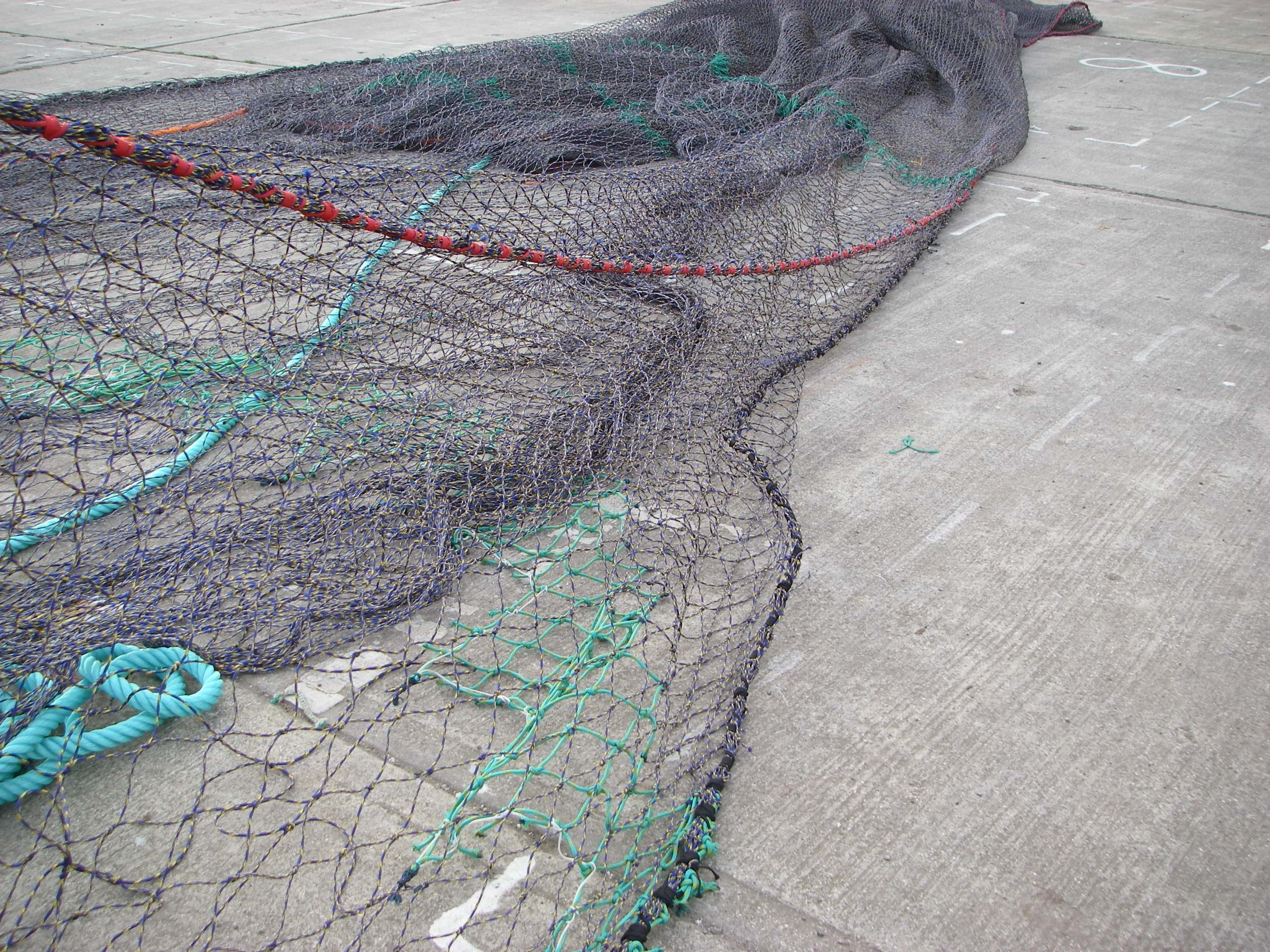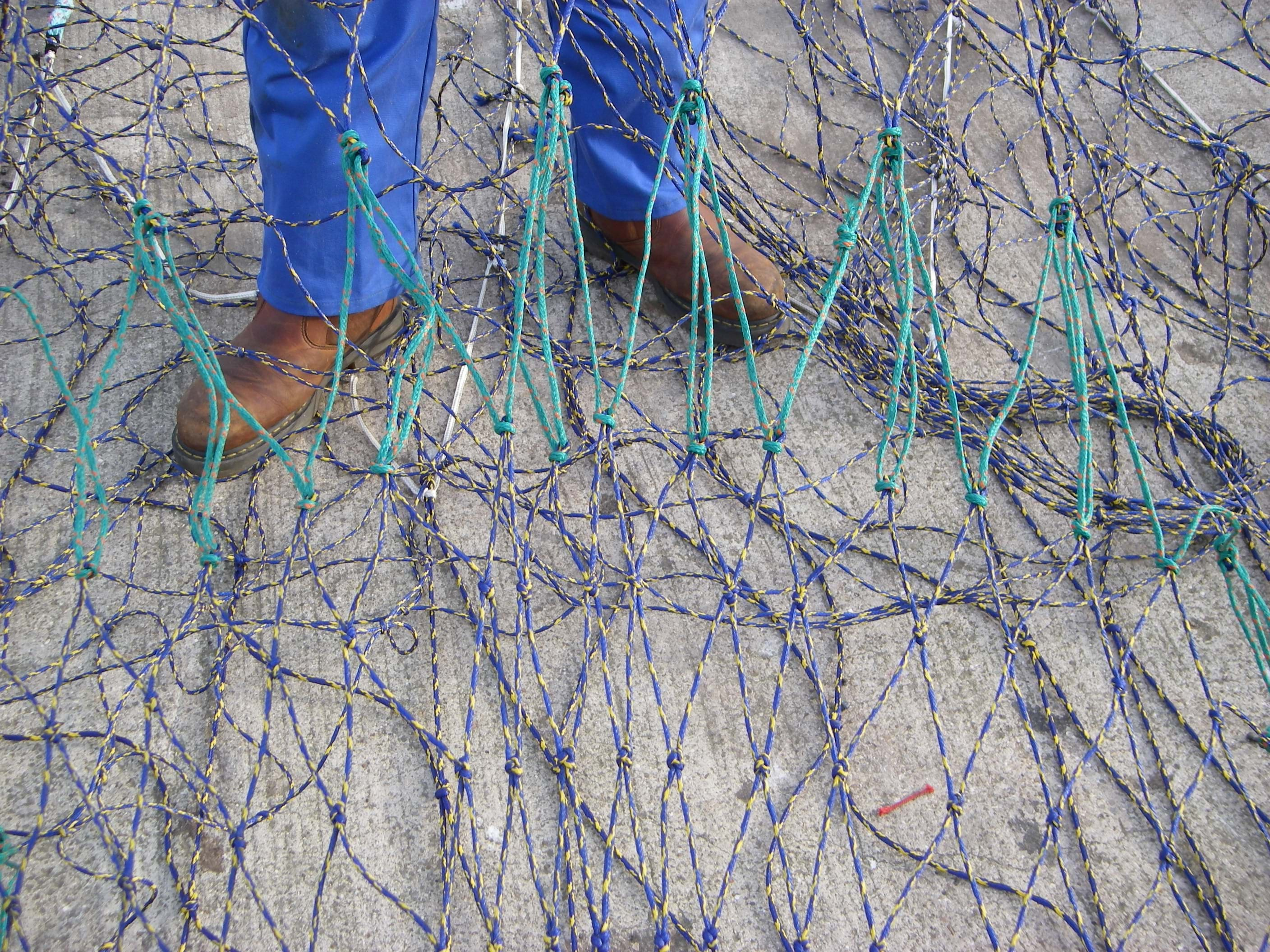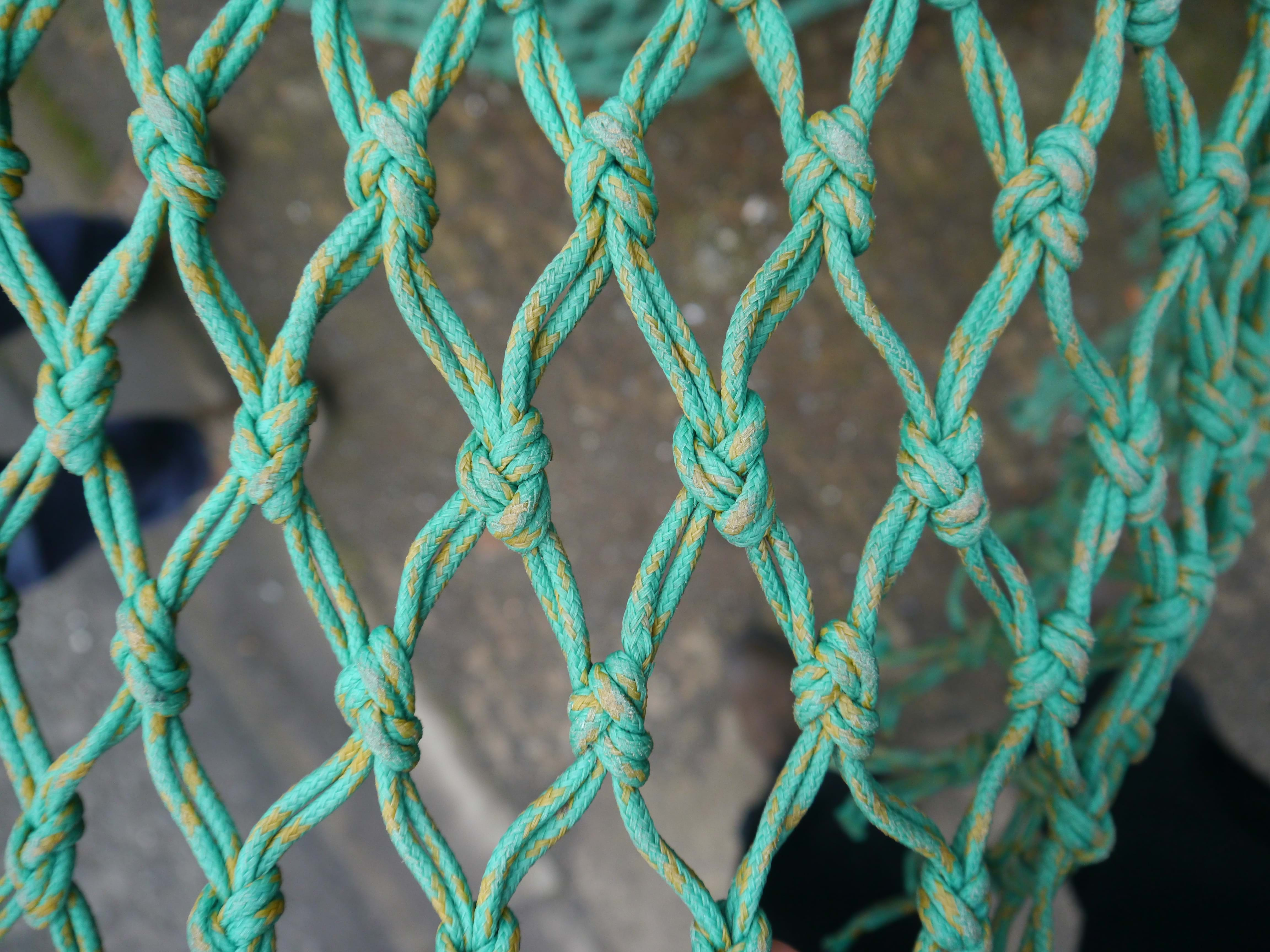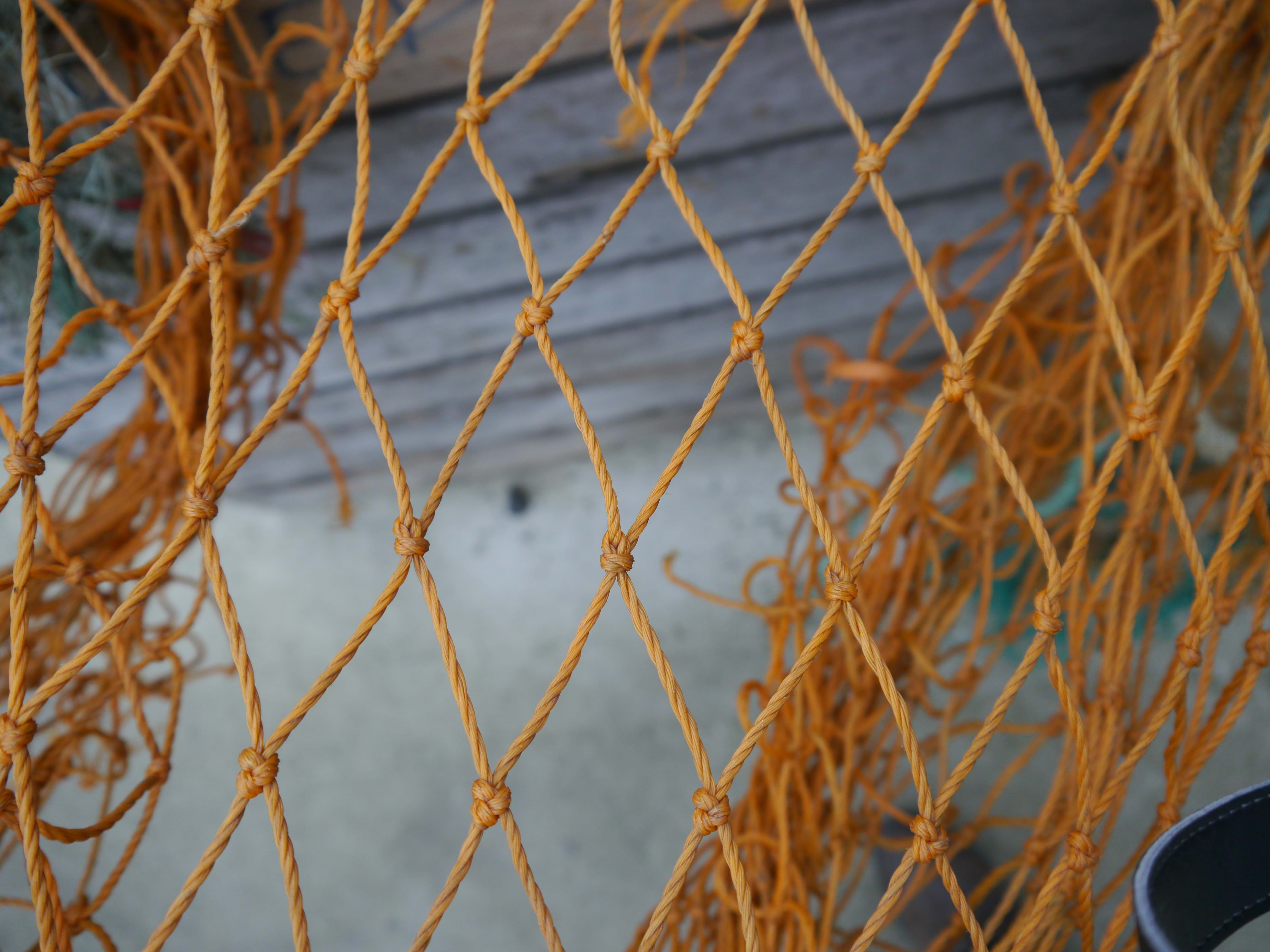Diamond Mesh Size
Summary
Most fishing gear is made of netting with diamond shaped meshes, this gives the gear flexibility and a certain amount of stretch. Increasing the mesh size is one of the easiest way to improve the size selectivity of any gear and reduce by-catch of immature fish.

Size selectivity
The size selectivity of most fishing gears can be changed by making changes to the mesh size. Bigger mesh gives the opportunity for more small fish to escape. This does depend on the smaller fish actually coming into close contact with the larger meshes. Their ease of escape also depends on how closely the shape of the meshes matches that of the cross section of the fish. (square mesh, diamond mesh etc).
In traps etc the netting is stretched over the frame therefore the mesh opening stays constant so there is a sharp cut off of what size can escape and what is released.
In gill nets etc the mesh size will have a direct relationship to the size of fish caught. this can be changed by altering the hanging ratio when there will be a change in mesh opening therefore a change in size of fish that are retained by the gear.
In towed gears, for the same size of mesh, there will be a wide range of mesh openings with the meshes generally more open nearer the mouth of the net and closing up more the closer it gets to the cod end. How much the meshes can actually open to is a fine balance between the hydro dynamic forces acting on the netting panels, and the drag of the net particularly the cod end as the gear is being towed through the water. In most trawls the mesh are only open to about 30% -40% at the mouth of the net, decreasing to as little as 10-20% at the cod end. The actual opening depending on the load on the netting panels and the amount of flow through the net
Other information
In trawls and seine nets, the main area of interest for mesh size selectivity is the cod end and extension of the net. In this area the fish are getting concentrated together in the restricted area of the extension and most species will actively start to look to escape from the confines of the net. This is one of the easiest and most common ways of improving the size selection of fish in a trawl or seine net. In most fisheries there is a minimum mesh size for the cod end that is set at a suitable size to allow immature fish to escape.
Some of the selection does happen further up in the trawl where the smaller species will escape through the meshes if they come into contact with them. At this point nearer the mouth of the trawl many of the fish are aware of the danger of the gear around them but are not realising yet that they are actually getting funnelled down into a dead end at the cod end. It is only when the gear starts to taper in, as it gets closer to the extension and cod end that the fish will try to escape through the meshes. Although not as effective as larger cod end mesh size, larger mesh in the forward parts of the trawl will make a significant improvement on the size selectivity of trawl or seine net, particularly if combined with larger cod end mesh size.
The benefits of any increase in mesh size can be negated by the way the netting is rigged onto the headline and foot rope or by making certain sections slightly shorter to increase the strain on them and close up the meshes. Also some of the newer netting used for cod ends and extensions are constructed in such a way that restricts the ability of the meshes to open fully thereby retaining more small fish.

In static gear the mesh size of the netting is used to determine what size of fish is caught by the gear. However in these gears the hanging ratio, that is how close together the meshes are fixed on the ropes, will also make a big difference to the catching ability of the gear. In these nets the netting is hung fairly slack so that the fish will get caught in the meshes more easily but small fish will swim through without getting caught up in the gear.
However larger demersal trawls and pelagic trawls often have very large diamond mesh in the forward parts of the trawl. The target species could easily swim out through these meshes but in this situation the large meshes are acting instead as a herding device, herding the fish into the mouth of the net.






Documents
-
Codend mesh size and square mesh trial in Southern Ireland
-
Square and large diamond mesh in Northern Ireland Nephrops Fishery
-
Implementation of more selective and sustainable fisheries (IMPSEL)
-
Large Mesh Top sheet in a Scottish nephrops trawl
-
Review of Technical measures in Scotland including mesh size changes
-
Effects of Codend Mesh Size and Twine Number on Nephrops Selectivity
-
Codends selectivity trials 1990
-
Improvement of Selectivity of Trawl Codends
Selection type
-
- Post-selection